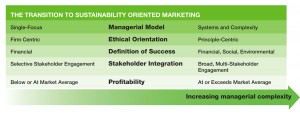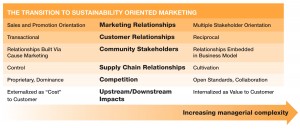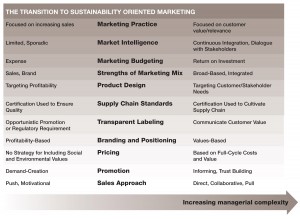Strategic Planning: Creating Success and Meaning
Thursday, February 12th, 2009Periods of economic uncertainty and transition place greater demands on organizations to engage in adaptive change processes. As a result, the idea of “what really works†in strategic planning has changed dramatically in the last 15 years.
Added to this are increased employee expectations for engagement, collaboration, and the opportunity to create positive social and environmental outcomes through their work.
- What really works in strategic planning?
- What must clients do to ensure a high quality process and outcome?
- How do we build progressive values for success and meaning into both the strategic planning process itself and the resulting strategic plan?
What Really Works In Strategic Planning?
Following we provide insights about what works in strategic planning, followed by some of the reasons traditional planning may have failed in that regard.
When the strategy is clear to everyone. Strategy needs to be simple enough for anyone in the company to understand.
- Avoid top-down approaches. Many organizations suffer from planning that goes on at the most senior level of the organization and doesn’t integrate wisdom from “the front lines.†Top-down planning also suffers as a result of a lack of understanding and buy-in. The most effective approach is one that combines top-down and bottom up approaches.
- Numbers aren’t the whole story. Strategies that are about hitting particular financial targets alone aren’t really strategies. Financial targets are goals that we want the strategies to deliver. A strategy is the mobilization of company-wide efforts needed to create the desired outcomes. Financial targets are the “what.†Strategies are the “how.â€
- Create shared language. The language of the executive office is often financial, but that doesn’t “translate†very well in other parts of the organization. Using planning tools that create shared language in all departments and levels of the organization helps make the strategy clear.
The strategy is resilient. One common critique of strategic plans is that they are obsolete as soon as they are written. Resilient strategies are based on organizational strengths and assets that have long-term strategic potential.
- Avoid strategies that are “borrowed†from other companies. Some companies try to copy what they see working for their competitors or peers in their industry. While great ideas can often be picked up from others, successful strategy is based on the unique assets and strengths of each organization.
- Base strategic plans on long-term opportunities, not short-term trends. A very common practice in organizations is to mistake tactical strategies for strategic planning. A short-term market opportunity then replaces organizational mission and strategy. Without balancing short-term and long-term, the organization short-changes itself on profitability and risks creating a culture driven from one crisis to another.
The strategy is fully implemented. Many organizations create reasonable strategies that are not fully implemented. When this happens, one of the following may be occurring.
- Invite people into agreement with the strategy. If the strategy process has not sufficiently included key perspectives in its development, the outcome will likely have opponents. Strategy processes that integrate differing views ultimately create stronger outcomes.
- Translate the strategy to day to day work. For many, the intuitive process of figuring out what strategy means for their work is fun and challenging. For others, it’s asking them to do the impossible. Creating measurable action steps, and in some cases, metrics and financial targets, is a critical step in strategy implementation.
- Role model at the executive level and follow through. In order to give the strategy a chance, there has to be managerial commitment and follow-through. If the strategy was developed without their buy-in or if the strategy is not robust enough, managers will become fearful that it doesn’t address the reality of today’s challenges. If they face resistance because key perspectives weren’t addressed in planning, they may lose the will to enforce it. If no one seems to get the strategy, they may become frustrated and conclude the strategy “doesn’t work.â€
The Client’s Role in Getting a Good Outcome?
Robust strategies that help organizations become more successful and profitable require quality input from the client. Clients need to consider carefully if they can make these commitments in order to get a better outcome from a planning effort:
- Will you commit a reasonable amount of time? Although many processes take too much time and cost too much, it is also true that you can’t craft a robust, fully articulated organizational strategy and action plan in a weekend retreat with a SWAT analysis and a brainstorming session. A reasonable amount of time for strategy development is 6 to 9 months. This time frame allows for comprehensive organizational and competitive analysis, as well as client research. During that time, the strategy process should not bring day to day activity to a halt. Rather, the process should feed new information into daily operations on an ongoing basis.
- Will you create opportunities for participation at all levels of the organization? Finding appropriate ways to tap the genius of the entire organization are essential to crafting practical, doable strategies and engaging the entire organization it their implementation. Strategy design isn’t necessarily a consensus process, but there must be broad input and dialogue. Some of the best strategies and innovations are “stumbled upon†in the initial stages of planning. They sometimes are small, unnoticed or under-valued aspects of the organization that only emerge with broad participation.
- Will you ask clients or customers what they really want? Committing the time and money to conduct client research is essential to strategy design. The primary sources of break-through innovations and thinking are efforts that solve clients’ problems in new and unique ways. WE all have our own standards of what quality or good work means. It’s important that we not mistake that for what customers or clients truly value. One of the key elements to sound strategy is focusing on what creates perceived value for clients. The only way to find out what creates perceived value for clients is by asking them. Without research, strategy making devolves into guesswork.
Creating Both Success and Meaning Through Strategy
“A path without heart is never enjoyable. You have to work hard even to take it. On the other hand, a path with heart is easy; it does not make you work at liking it.â€
-Â Â Â Carlos Castaneda, The Teachings of Don Juan
Employee loyalty and enthusiasm are two of the greatest strategic assets of any organization. We tap the potential of these assets when organizations serve a purpose that creates meaning for their work.
Organizations can create meaningful engagement in the ways they conduct strategic planning exercises, as well as in how they incorporate values and mission in the resulting plans.
Strategic planning processes can create anxiety and uncertainty, over and above that generated by the changing dynamics that make the planning process necessary. The following elements can help organizations bring out the best in their people as they go about strategic planning processes.
- Collaborative Engagement – Creating opportunities for engagement, dialogue and input from all levels of the organization is essential to creating understanding of and support for strategic plans. It is also the primary way to tap the genius within the organization to find its own solutions. While we do not conduct planning from a consensus model, we do design ways to get engagement and information efficiently and in ways that make participants feel heard and valued.
- Build On What’s Already Working – Focusing the organization on what’s working creates hope and a foundation upon which to build new strengths. What do clients or customers already really appreciate and want from the organization? What’s the opportunity to leverage existing strengths and capacities for further growth? What are the “stumble upon†initiatives that are working that can be amplified?
Additionally, strategic planning offers an opportunity for organizations to step back and integrate social and environmental values and opportunities into the core business. In 2008, almost 60% of companies surveyed by McKinsey and Company reported that they were integrating environmental and social missions into their core strategy to a greater degree than they were five years prior. Although cost savings and new marketing opportunities motivate some of these initiatives, such practices also attract top talent. “Recruitment and retention consultancies like Kenexa, Hewitt Associates, Robert Half, and Towers Perrin have published figures demonstrating a link between environmentally friendly workplaces and engaged employees,†writes Andree Iffrig, author of Find Your Voice at Work: The Power of Storytelling in the Workplace (Limegrass 2007). Environmental and social values pave the path with heart that employees want to walk.



